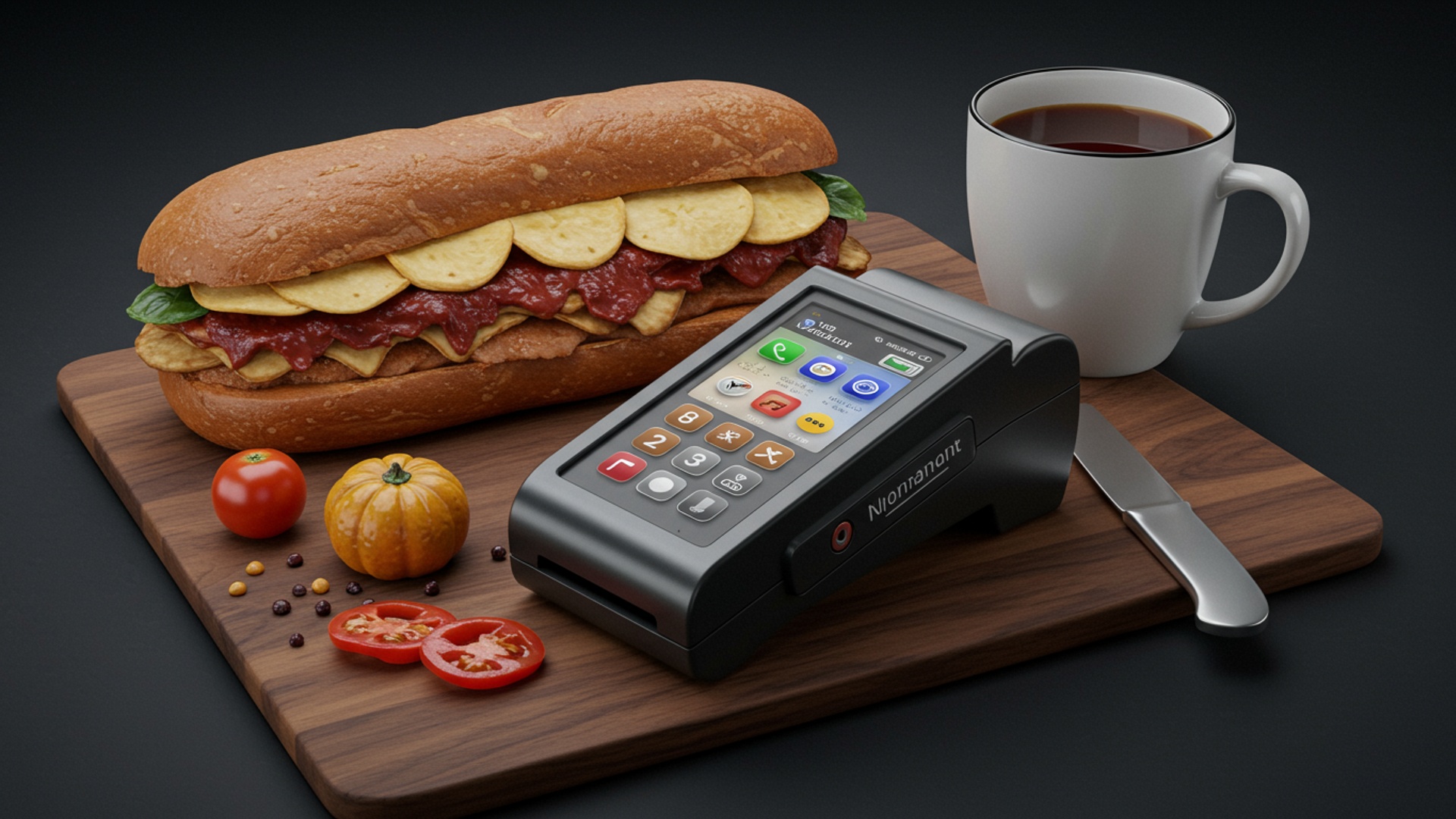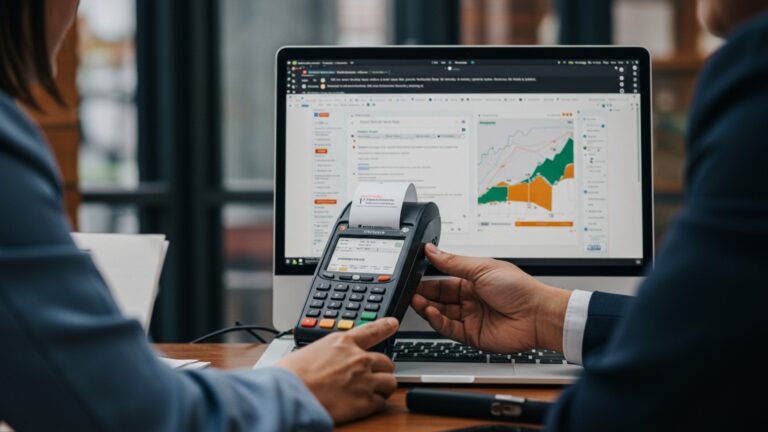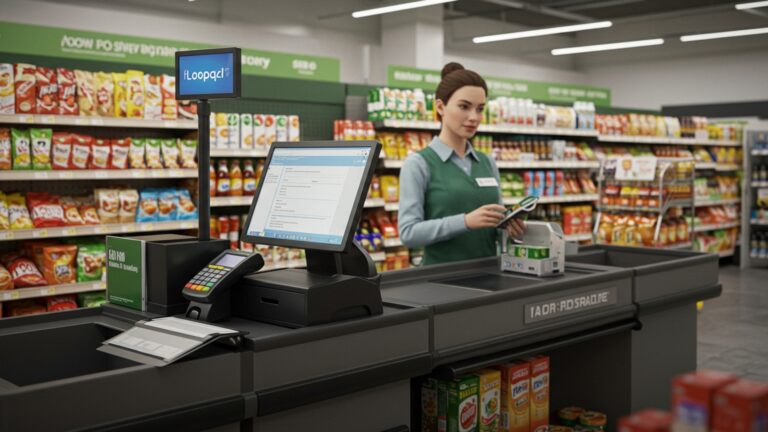How to Optimize Your Restaurant with Smart POS Software Solutions
The modern restaurant landscape demands more than just traditional order-taking; it requires an intelligent operational backbone. As consumer expectations shift towards seamless online ordering, contactless payments. personalized experiences, efficient restaurant POS software has evolved from a simple cash register to a sophisticated, cloud-based command center. Imagine a system that not only processes transactions but also provides real-time inventory insights, optimizes staff scheduling based on predictive analytics. integrates effortlessly with third-party delivery platforms. This comprehensive approach empowers establishments to minimize food waste, accelerate table turnover. cultivate deeper customer loyalty through data-driven promotions, directly impacting profitability in today’s competitive market.

Understanding Smart POS Software: The Modern Heart of Your Restaurant
In the fast-paced world of gastronomy, efficiency and precision are paramount. Gone are the days when a simple cash register and pen-and-paper orders sufficed. Today, forward-thinking establishments are leveraging smart restaurant pos software solutions – a sophisticated evolution of the traditional Point of Sale system. But what exactly is a smart POS. how does it fundamentally differ from its predecessors?
At its core, a smart restaurant POS software system is an integrated platform designed to manage all aspects of a restaurant’s operations, from order taking and payment processing to inventory management, staff scheduling. customer relationship management. Unlike older, standalone systems that primarily handled transactions, modern restaurant POS software acts as a central nervous system, connecting various operational points and providing a holistic view of the business.
The “smart” in smart POS refers to its advanced capabilities:
- Cloud-Based Architecture
- Integrated Ecosystem
- Data Analytics
Many modern systems operate in the cloud, meaning data is stored remotely and accessible from anywhere, on any device with an internet connection. This offers unparalleled flexibility and real-time insights.
It integrates seamlessly with other essential restaurant technologies, such as kitchen display systems (KDS), online ordering platforms, payment gateways. accounting software.
Beyond just recording transactions, smart restaurant POS software collects and analyzes vast amounts of data, providing actionable insights into sales trends, peak hours, popular menu items. staff performance.
To illustrate the shift, consider this comparison:
| Feature | Traditional POS System | Smart Restaurant POS Software |
|---|---|---|
| Data Storage | Local server, limited access | Cloud-based, accessible anywhere, real-time |
| Functionality | Primarily sales and payment processing | Comprehensive operations: sales, inventory, CRM, staff, online ordering |
| Reporting | Basic sales summaries, often manual export | Advanced analytics, customizable reports, predictive insights |
| Integration | Limited, often requires manual data transfer | Seamless with KDS, online platforms, accounting, etc. |
| Updates | Manual, often costly software upgrades | Automatic, cloud-based updates, continuous feature improvements |
| Accessibility | Fixed terminals | Tablets, mobile devices, fixed terminals |
This evolution highlights how smart restaurant POS software transcends mere transaction processing, becoming a strategic tool for growth and operational excellence.
Unlocking Operational Excellence: Key Features and Their Impact
The true power of a smart restaurant POS software lies in its comprehensive suite of features, each designed to streamline a specific aspect of your restaurant’s operations. Understanding these capabilities is the first step towards truly optimizing your business.
Order Management and Kitchen Efficiency
- Intuitive Order Entry
- Kitchen Display Systems (KDS) Integration
- Table Management
Staff can take orders quickly and accurately using touchscreens or handheld devices. Modifiers (e. g. , “no onions,” “extra cheese”) are easily added, reducing errors.
Orders are instantly sent to the kitchen, displayed on screens. organized by course or preparation time. This eliminates lost tickets, improves communication. speeds up service. For example, a busy pizza place can see a dramatic reduction in order errors and wait times by using a KDS that prioritizes orders based on cooking time, ensuring hot, fresh pies every time.
Track table status (occupied, vacant, waiting for food), manage reservations. split checks effortlessly.
Inventory Management and Waste Reduction
- Real-time Stock Tracking
- Supplier Management
- Recipe Management
- Wastage Tracking
Monitor ingredient levels as they are consumed, automatically adjusting inventory counts. This feature is a game-changer for cost control.
Generate purchase orders, track deliveries. manage vendor relationships directly through the system.
Define recipes with precise ingredient quantities. When a dish is sold, the corresponding ingredients are deducted from inventory. Chef Elena, owner of “Green Bites,” a farm-to-table restaurant, reported a 15% reduction in food waste within six months of implementing a smart restaurant POS software that tracked ingredient usage down to the gram. This not only saved costs but also aligned with her sustainability goals.
Log spoiled or wasted items to identify patterns and areas for improvement.
Customer Relationship Management (CRM)
- Customer Profiles
- Loyalty Programs
- Feedback Collection
Capture customer data, including order history, preferences. contact data.
Integrate loyalty programs, allowing customers to earn points, redeem rewards. receive personalized offers. A coffee shop using a smart restaurant POS software can automatically send a “free coffee on your birthday” coupon to loyal customers, driving repeat business and enhancing customer satisfaction.
Some systems allow for direct customer feedback, helping you quickly address issues and improve service.
Reporting and Analytics
- Sales Reports
- Performance Metrics
- Forecasting Tools
Detailed breakdowns by item, category, time of day, server. payment method.
Track key performance indicators (KPIs) like average check size, table turnover rates. peak sales periods.
Utilize historical data to predict future sales, helping with inventory ordering and staff scheduling. This allows a restaurant manager to confidently staff for an upcoming holiday based on last year’s sales data, preventing both understaffing and overpaying for labor.
Employee Management
- Time & Attendance
- Shift Scheduling
- Performance Tracking
Staff can clock in and out directly through the POS, simplifying payroll.
Create and manage schedules, ensuring adequate staffing levels during peak hours.
Monitor individual server sales, tips. order accuracy.
Online Ordering and Delivery Integration
- Seamless Integration
- Menu Management
Orders placed through your website or third-party delivery apps flow directly into your POS and KDS, eliminating manual entry errors.
Easily update menus across all platforms from a single point.
Payment Processing
- Multiple Payment Options
- Secure Transactions
Accept credit cards, mobile payments, gift cards. even cryptocurrency in some advanced systems.
EMV compliance and tokenization ensure secure payment processing, protecting both your business and your customers.
Each of these features, when leveraged effectively, contributes to a more efficient, profitable. customer-centric restaurant operation. Investing in robust restaurant pos software is investing in the future of your business.
Real-World Applications: Transforming Restaurant Operations
Understanding the features of smart restaurant POS software is one thing; seeing them in action is another. Here, we’ll explore practical scenarios and case studies that highlight how these solutions drive tangible improvements in real-world restaurant environments.
Enhancing the Dining Experience and Table-Side Efficiency
Imagine a bustling Friday night at “The Urban Spoon.” Servers, equipped with handheld tablets integrated with their restaurant POS software, can take orders directly at the table. This eliminates the need to write down orders, walk to a stationary terminal. then manually input them. The order goes straight to the KDS, reducing order entry errors and accelerating kitchen prep. Customers appreciate the faster service and accurate orders, leading to higher satisfaction and potentially better tips for staff.
Case Study: “Bistro 74” – Reduced Order Errors and Improved Turnaround
Bistro 74, a popular downtown eatery, struggled with order accuracy during peak hours. Miscommunications between servers and the kitchen led to remakes and customer frustration. After implementing a new restaurant POS software with integrated handheld devices and KDS, they saw a 30% reduction in order errors and a 15% improvement in table turnover rates. “Our servers spend more time engaging with guests and less time running back and forth,” says owner Mark Thompson. “The KDS ensures everyone in the kitchen knows exactly what’s needed, minimizing delays.”
Optimizing Inventory and Supply Chain Management
For a multi-location chain like “Global Tacos,” managing inventory across several kitchens can be a logistical nightmare. A smart restaurant POS software solution provides a centralized view of stock levels at each location. When a specific ingredient runs low at one branch, the system can automatically flag it, suggest reorder quantities based on sales forecasts. even generate purchase orders to preferred suppliers. This not only prevents stockouts but also minimizes over-ordering, significantly reducing food waste and spoilage—a major cost saver in the food industry. One manager reported saving approximately $500-$700 weekly across their three locations just by having better inventory control.
Personalized Customer Engagement and Loyalty
“Caffeine Hub,” a local coffee shop, uses its restaurant POS software to track customer purchase history. When a regular customer, Sarah, walks in, the barista can quickly see her usual order (a Grande Latte with almond milk) and even offer a personalized recommendation for a new pastry she might like. Because Sarah is part of their loyalty program, the system automatically applies her accumulated points and notifies her of any special promotions. This level of personalized service fosters a stronger connection with customers, turning casual visitors into loyal patrons. It’s an example of how a robust restaurant POS software can elevate the customer journey.
Data-Driven Decision Making
The owner of “The Grill House,” a steak restaurant, uses the detailed analytics from their restaurant POS software to make strategic business decisions. By analyzing sales data, they discovered that their premium ribeye sells significantly better on weekends, while their lunch specials are most popular on Tuesdays and Wednesdays. This insight allowed them to adjust their marketing efforts, optimize staffing schedules for peak times. even refine their menu offerings, leading to a 10% increase in profitability over six months. The data also helped them identify their least popular items, which they either revamped or removed, further streamlining operations.
Seamless Online Ordering and Delivery
During the recent surge in demand for takeout and delivery, “Pasta Paradise” leveraged its restaurant POS software with integrated online ordering. Customers could place orders directly through the restaurant’s website. these orders flowed instantly to the kitchen display system. The POS also managed delivery logistics, including assigning drivers and tracking order status. This integration allowed “Pasta Paradise” to pivot quickly, maintain a strong revenue stream during challenging times. provide a smooth, reliable experience for customers, cementing their reputation for convenience and quality.
// Example of how a KDS might display an order (conceptual, not actual code)
Order ID: #1023
Table: 5
Server: Emily
Time: 18:35 Items: - 1x Grilled Salmon (Med-Rare, Asparagus, Lemon Butter) - Status: Cooking - 1x Filet Mignon (Well Done, Mashed Potatoes, Side Salad) - Status: Prep - 2x Iced Tea - Status: Ready Notes: - Salmon: Allergy Alert - No Dairy
These examples underscore that smart restaurant POS software is not just a tool for processing transactions. a strategic asset that empowers restaurants to operate more efficiently, enhance customer satisfaction. make informed business decisions that drive growth.
Choosing the Right Restaurant POS Software for Your Business
Selecting the ideal restaurant POS software is a critical decision that can significantly impact your restaurant’s efficiency, profitability. customer satisfaction. With a multitude of options available, it’s essential to evaluate potential systems based on several key criteria to ensure it aligns perfectly with your unique operational needs and future goals.
1. Scalability: Growing with Your Business
Your restaurant today might be a single-location bistro. tomorrow it could be a multi-branch chain. A good restaurant POS software should be able to scale with you. Consider if the system can easily add new terminals, locations, or integrate additional features as your business expands. Cloud-based solutions often offer superior scalability, as adding capacity or new locations typically involves less hardware and setup time compared to on-premise systems.
2. Integration Capabilities: A Connected Ecosystem
A smart POS doesn’t operate in a vacuum. It should seamlessly integrate with other essential software and hardware you use or plan to use. Key integrations to look for include:
- Kitchen Display Systems (KDS)
- Online Ordering Platforms
- Payment Gateways
- Accounting Software
- Inventory Management Systems
- Loyalty and CRM Programs
For streamlined kitchen communication.
Your website, third-party delivery apps.
To handle various payment methods securely.
Such as QuickBooks or Xero, to simplify bookkeeping.
If not built-in, to manage stock effectively.
To foster customer relationships.
The more integrated your systems are, the less manual data entry is required, reducing errors and saving valuable time. For instance, a restaurant that relies heavily on online orders needs a restaurant POS software that automatically syncs these orders, preventing the need for staff to manually re-enter them.
3. Ease of Use: Empowering Your Staff
No matter how powerful a system is, its effectiveness is limited if your staff find it difficult to use. Look for an intuitive, user-friendly interface that requires minimal training. Features like clear menus, customizable layouts. logical workflows contribute to a smooth learning curve. A quick and efficient order entry process means faster service and fewer mistakes, especially during peak hours. Conduct a demo and have some of your staff test it out; their feedback is invaluable.
4. Support and Training: Your Partner in Success
Even the most robust restaurant POS software can encounter issues. Reliable customer support is non-negotiable. Inquire about:
- Availability
- Support Channels
- Response Times
- Training Resources
24/7 support is ideal for restaurants operating outside standard business hours.
Phone, email, chat. knowledge bases.
How quickly do they address critical issues?
Are there comprehensive tutorials, videos, or on-site training options for new staff?
A strong support system ensures minimal downtime and a smoother operational flow.
5. Cost: Balancing Features with Budget
The cost of a restaurant POS software solution isn’t just the upfront purchase price. Consider the total cost of ownership (TCO), which includes:
- Hardware Costs
- Software Licenses/Subscriptions
- Integration Fees
- Maintenance and Support Fees
- Payment Processing Fees
Terminals, printers, card readers, handheld devices.
Many modern systems are subscription-based (SaaS).
For connecting with third-party apps.
Ongoing costs.
grasp the rates and any hidden charges.
While it’s tempting to opt for the cheapest option, remember that an effective system can save you money in the long run through increased efficiency, reduced waste. improved sales. Evaluate the ROI (Return on Investment) rather than just the initial price tag.
6. Security: Protecting Your Business and Customers
Handling sensitive customer and financial data requires stringent security measures. Ensure the restaurant POS software is PCI DSS compliant for payment processing. Look for features like end-to-end encryption, tokenization. robust user access controls. Cloud-based systems should have strong data backup and disaster recovery protocols. Protecting your business from data breaches is paramount for maintaining customer trust and avoiding costly legal issues.
By carefully evaluating these factors, you can make an informed decision and select a restaurant POS software that not only meets your current needs but also positions your business for future success.
Implementation and Optimization Strategies for Your Restaurant POS Software
Acquiring state-of-the-art restaurant POS software is merely the first step. To truly unlock its potential and drive tangible benefits, effective implementation and continuous optimization are crucial. This isn’t a “set it and forget it” solution; it requires a strategic approach.
1. Phased Rollout and Thorough Testing
Resist the urge to switch everything over at once. A “big bang” approach can lead to chaos and frustration. Instead, consider a phased rollout:
- Pilot Program
- Shadow Period
- Test Every Scenario
Start with a small, less busy section of your restaurant or a specific shift. This allows you to identify and resolve issues without disrupting your entire operation.
For a few days, run both the old and new systems simultaneously. This helps staff get accustomed to the new restaurant POS software while having a fallback.
Before going live, simulate various situations: split checks, returns, discounts, online orders. even system outages. Ensure all hardware (printers, card readers) is working correctly.
As an anecdote, a restaurateur friend of mine initially tried to implement their new restaurant POS software over a single weekend. By Sunday evening, the staff was overwhelmed, orders were delayed. the kitchen was in disarray. They had to revert to their old system and implement a more gradual, phased approach the following month, which proved much more successful.
2. Comprehensive Staff Training and Buy-in
Your team is your most valuable asset. their proficiency with the new restaurant POS software directly impacts its success. Invest in thorough and ongoing training:
- Hands-on Sessions
- Role-Specific Training
- Designated Super Users
- Highlight Benefits
- Continuous Learning
Provide practical training with mock scenarios.
Servers, bartenders, kitchen staff. managers will use different aspects of the system. Tailor training to their specific responsibilities.
Appoint a few tech-savvy staff members as “super users” who can assist colleagues and be the first point of contact for minor issues.
Explain how the new system will make their jobs easier, reduce errors, improve tips (due to faster service). enhance overall efficiency. Address their concerns proactively.
Provide refreshers and training on new features as they are rolled out.
Staff resistance is common. Emphasize that the new restaurant POS software is designed to help them, not replace them. listen to their feedback during and after training.
3. Leveraging Data for Continuous Improvement
The analytical capabilities of your smart restaurant POS software are its most powerful feature. Don’t let valuable data go unexamined:
- Regular Reporting
- Identify Trends
- Menu Optimization
- Staff Scheduling
- Marketing Strategies
Schedule daily, weekly. monthly reviews of sales reports, inventory levels. labor costs.
Look for patterns in sales (peak hours, popular items), identify slow-moving inventory. examine staff performance.
Use sales data to identify your most profitable and popular dishes. Consider promoting these items or adjusting pricing for less popular ones.
Optimize schedules based on historical sales data to ensure adequate staffing during busy periods and prevent overstaffing during slow times.
Use CRM data to segment customers and create targeted promotions or loyalty programs.
For example, by analyzing sales data, a restaurant might discover that despite being a customer favorite, their signature dessert has a very low-profit margin due to high ingredient costs. This insight, provided by the restaurant POS software, allows management to either re-evaluate the recipe, adjust the price, or find a more cost-effective supplier.
4. Regular Updates and Feature Exploration
Cloud-based restaurant POS software solutions are continuously evolving. Ensure you take advantage of updates and new features:
- Stay Informed
- Explore New Features
- Provide Feedback
Read release notes and updates from your POS provider.
Regularly check for new functionalities that could further enhance your operations. Perhaps a new integration with a popular food delivery service or an advanced inventory forecasting tool has been added.
Share your experiences and suggestions with your POS provider. Your input can help shape future updates.
5. Robust Security Practices
While your restaurant POS software provides security features, your practices must reinforce them:
- Strong Passwords
- Role-Based Access
- Regular Backups
- Hardware Security
Enforce strong, unique passwords for all staff accounts.
Limit access to sensitive functions (e. g. , refunds, reporting) based on staff roles.
Even with cloud systems, interpret their backup protocols.
Secure physical terminals and ensure network security.
By adopting these strategies, your restaurant can move beyond simply using a new system to truly optimizing its operations with the full capabilities of modern restaurant POS software.
Addressing Common Challenges in POS Implementation
While the benefits of smart restaurant POS software are undeniable, the journey to optimization isn’t always without hurdles. Anticipating and addressing common challenges proactively can ensure a smoother transition and maximize your return on investment.
1. Initial Cost and Budgeting
One of the most significant concerns for many restaurant owners is the upfront and ongoing cost of a new restaurant POS software system. While traditional POS systems might have high upfront costs for hardware and perpetual licenses, modern cloud-based solutions often involve subscription fees and potentially less expensive hardware (e. g. , tablets instead of bulky terminals). But, these recurring costs need to be factored into your budget.
- Strategy
- Calculate ROI
- Explore Flexible Pricing
- Leasing Options
- Government Incentives
Instead of viewing it as an expense, calculate the potential return on investment. How much will you save in labor, reduced waste. improved efficiency? How much will you gain in increased sales and customer loyalty?
Many providers offer tiered pricing based on features or the number of terminals. Start with a plan that meets your essential needs and upgrade as your business grows.
Some providers offer hardware leasing to spread out the initial capital expenditure.
Research any local or national tax credits or grants for technology upgrades in small businesses.
It’s vital to remember that a well-chosen restaurant POS software is an investment in your restaurant’s future, not just a cost center.
2. Staff Resistance to Change
Humans are creatures of habit. introducing a new system, especially one that impacts daily routines, can be met with resistance. Staff might fear the unknown, worry about their job security, or simply dislike learning new technology.
- Strategy
- Communicate Early and Often
- Involve Staff in the Selection
- Provide Excellent Training
- Highlight Successes
- Lead by Example
Explain the “why” behind the change. Highlight how the new restaurant POS software will benefit them directly (e. g. , easier order entry, accurate tips, less manual work, faster service leading to happier customers).
If possible, let key staff members participate in demos and provide feedback on potential systems. This fosters a sense of ownership.
As discussed, comprehensive, hands-on. patient training is crucial. Offer refreshers and be available to answer questions.
Share positive feedback or improvements seen after implementation to build confidence.
Management’s enthusiasm and proficiency with the new system can be contagious.
A positive and supportive environment during the transition can make all the difference. For instance, a manager at a local diner successfully eased staff concerns by creating a “POS Champion” role, where a tech-savvy server helped others learn the new restaurant POS software, turning potential resistance into shared learning.
3. Data Security and Privacy Concerns
With more data being collected and stored digitally, concerns about data breaches, cyberattacks. customer privacy are legitimate. Restaurants handle sensitive insights, including credit card details, customer names. purchase histories.
- Strategy
- Choose PCI-Compliant Software
- comprehend Data Encryption
- Implement Strong Access Controls
- Regular Software Updates
- Employee Training on Security
- Review Provider’s Security Policy
Ensure your restaurant POS software and payment processor are fully PCI DSS (Payment Card Industry Data Security Standard) compliant. This is non-negotiable.
Verify that sensitive data is encrypted both in transit and at rest.
Utilize role-based permissions to limit which employees can access or modify sensitive data within the system.
Keep your restaurant POS software updated to patch any security vulnerabilities. Cloud-based systems often do this automatically.
Educate staff on best practices, such as creating strong passwords, recognizing phishing attempts. never sharing login credentials.
grasp how your POS provider protects your data and what their disaster recovery plan is.
By taking a proactive approach to security, you protect your business, your customers. your reputation, ensuring that your smart restaurant POS software is a secure foundation for your operations.
Conclusion
Optimizing your restaurant with smart POS software isn’t merely an upgrade; it’s a strategic shift towards operational excellence. I’ve personally seen how a well-implemented system, like one offering real-time inventory alerts, can prevent costly waste and ensure popular dishes are always available. Beyond just processing transactions, these solutions empower you to gain profound insights into peak hours, popular menu items. even staff performance, transforming raw data into actionable strategies. My personal tip is to start by identifying your biggest pain points – is it order accuracy, table turnover, or inventory control? Then, actively seek out a POS that directly addresses those challenges, rather than simply adopting a generic system. Embrace the power of cloud-based POS for scalability and remote management, a recent development that offers unprecedented flexibility for restaurateurs. By integrating these intelligent tools, you’re not just running a business; you’re building a more efficient, profitable. future-ready dining experience. Take that decisive step. watch your restaurant thrive. Learn more about mastering essential features to truly boost your operations: Master Restaurant POS Software Essential Features to Boost Your Operations.
More Articles
How to Leverage Cloud Based POS Software for Scalable Business Growth
Guide to Implementing Mobile POS Software for Flexible Business Transactions
How to Streamline Your Billing with Effective POS Billing Software Solutions
Learn How POS Software Can Revolutionize Your Small Business Operations
Master Billing and POS Software Integration for Enhanced Business Efficiency
FAQs
What exactly is a “smart” POS system and why should my restaurant consider one?
A smart POS goes beyond basic transaction processing. It integrates various aspects of your restaurant – from order taking and payment to inventory, kitchen management. customer data – into one intelligent platform. It’s designed to streamline operations, reduce errors. provide valuable insights, making your restaurant run more efficiently and profitably.
How can smart POS software make my servers’ lives easier and improve customer service?
Smart POS systems drastically improve front-of-house operations by enabling quick, accurate order entry (often wirelessly), splitting bills effortlessly. managing table assignments efficiently. This reduces manual errors, speeds up service. frees up staff to focus more on guest interaction, leading to a much better customer experience.
Can this technology actually help in the kitchen?
Absolutely! Smart POS solutions often include Kitchen Display Systems (KDS). These digital screens show orders instantly and clearly, helping chefs prioritize, track preparation times. ensure dishes are sent out accurately and on time. It eliminates paper tickets, reduces miscommunications. speeds up the entire food preparation process.
What about managing inventory and cutting down on food waste?
A key benefit is its robust inventory management. The system tracks ingredients as they’re used in orders, providing real-time stock levels. It can even alert you when supplies are low and generate purchase orders. This visibility helps you make smarter ordering decisions, minimize spoilage. significantly reduce food waste, directly impacting your bottom line.
How does a smart POS help me grasp my customers better?
It gathers valuable data on customer preferences, popular dishes, peak dining times. average spend. By tracking this details, you can identify trends, personalize promotions, create effective loyalty programs. tailor your menu to what your guests truly want, fostering repeat business and stronger customer relationships.
Is it complicated to set up and train my staff on a new POS system?
While any new system requires some initial setup and training, modern smart POS solutions are designed with user-friendliness in mind. Many offer intuitive interfaces and cloud-based access, making them relatively straightforward to learn. Most providers also offer support and training resources to ensure a smooth transition for your team.
What kind of insights or reports can I get from a smart POS?
You’ll gain access to a wealth of analytical reports, covering sales performance by item, server, or time of day, labor costs, inventory usage, customer spending patterns. more. These insights are crucial for identifying areas for improvement, making data-driven business decisions. ultimately boosting your restaurant’s profitability.





